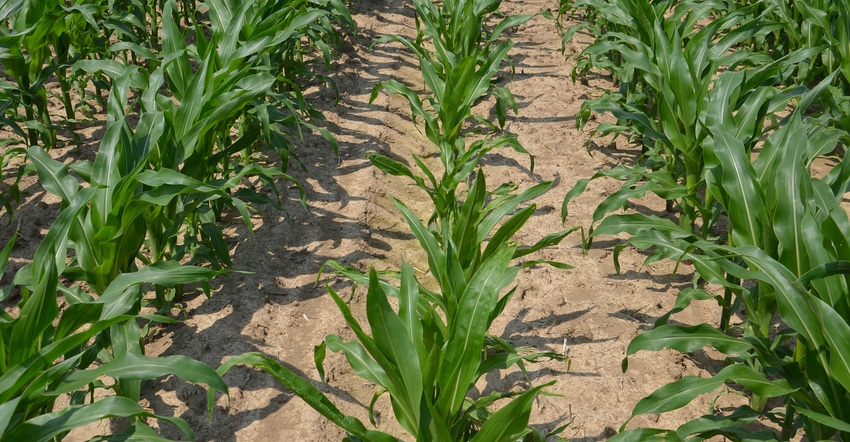
Ken Scheeringa and Bob Nielsen teamed up to answer questions about soil temperature when Ken Simpson, Morristown, reported low morning readings in early May. The discussion led to more questions and answers about soil temperature and its impact on crop growth.
Here are seven keys pointed out by Scheeringa and Nielsen. Scheeringa is Indiana’s associate state climatologist. Nielsen is a Purdue University Extension corn specialist.
1. Soil type and water content affect soil temperature cycles. “Sandy, dry soils can heat up very fast, even to higher than the air temperature,” Scheeringa says. “So on a sunny summer day when the maximum air temperature reaches the mid-90s, it isn’t unusual for sandy, dry soils at 1 to 2 inches deep to zoom past 100 degrees [F].”
2. Soil temptends to be lower than air temp early; then the pattern reverses. Early in the spring, soil temperature may average slightly below air temperature, Nielsen says. He’s talking about soil temperature in the 2- to 4-inch depth range, under bare soil.
“From early June on, the soil temperature is typically higher than the air temperature,” he explains. “It’s all about the sun hitting the soil surface.”
3. Soil moisture content affects soil temperature. Soils are typically cooler in the spring, coming out of winter, Nielsen says. Scheeringa adds that as the ground warms up, some of the heat is used to dry wet soil. The rest of the heat goes toward raising soil temperature.
4. Wet soils warm up more slowly. Heat that dries the soil is called “latent” or “hidden” heat, Scheeringa says. Climatologists call heat that warms the soil “sensible” heat. “If available heat is being shared between latent and sensible, the soil temperature will take longer to warm up,” he says.
5. Heat absorbed during a warm day can be passed down deeper the next day. Soil temperature by depth in the soil isn’t a straight line. It curves back and forth in an S curve or snake pattern, Scheeringa says. “If you drew a line through the soil connecting all points of say 50 degrees, then that line would look like a snake S-wave as it goes deeper into the soil,” he explains.
6. The "heat highway" in the soil runs in both directions. In the spring and summer, heat is passed down through the soil column. In the winter, the pattern reverses course. Heat can be passed up through the soil profile in the same way, Scheeringa says. In winter, this may show up as layers of frozen and unfrozen soil with depth.
7. The growing degree day system is based on air temperature. But that doesn’t mean it can’t be related back to how plants develop, starting with germination and emergence, Nielsen says. “We have determined how many growing degree days corn needs to emerge, and then move from one growth stage to another,” he explains. “If you know the number of growing degree days accumulated since planting, you can estimate the stage of growth of corn in any given field fairly accurately, even if you’ve never been to the field.”
About the Author(s)
You May Also Like




